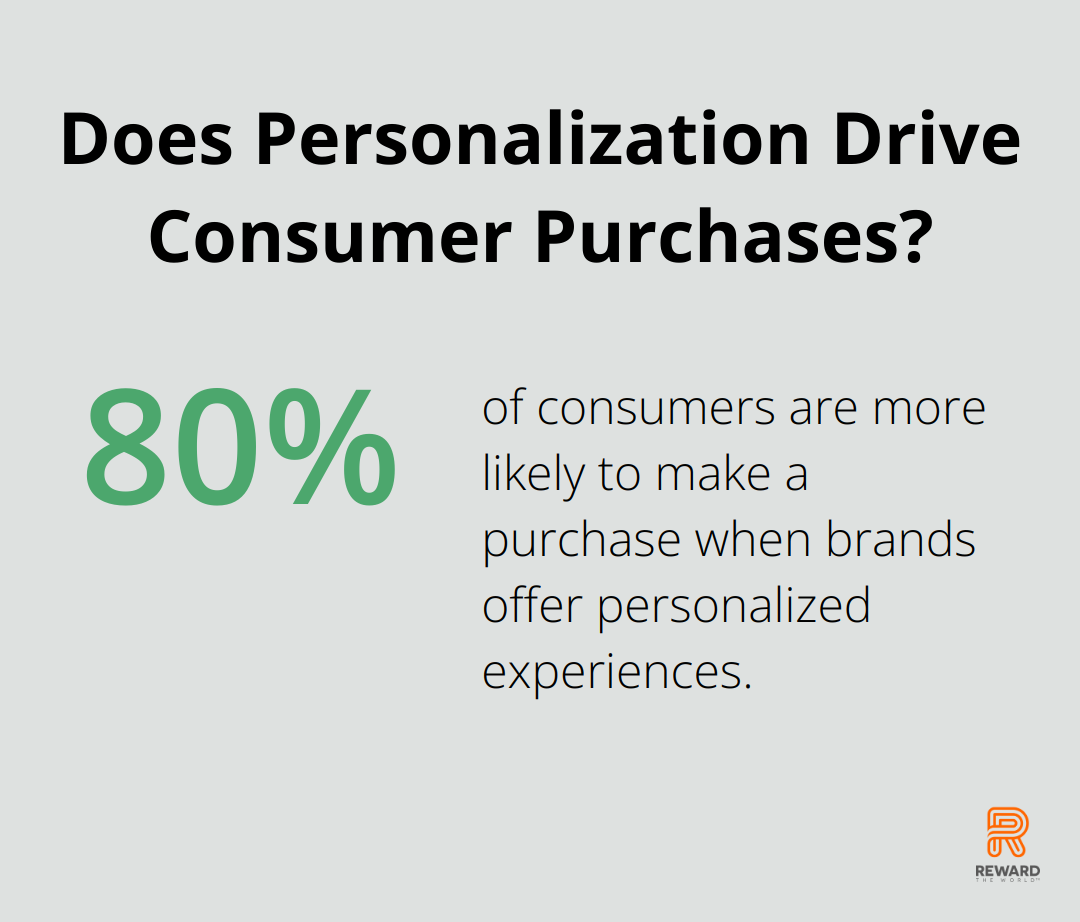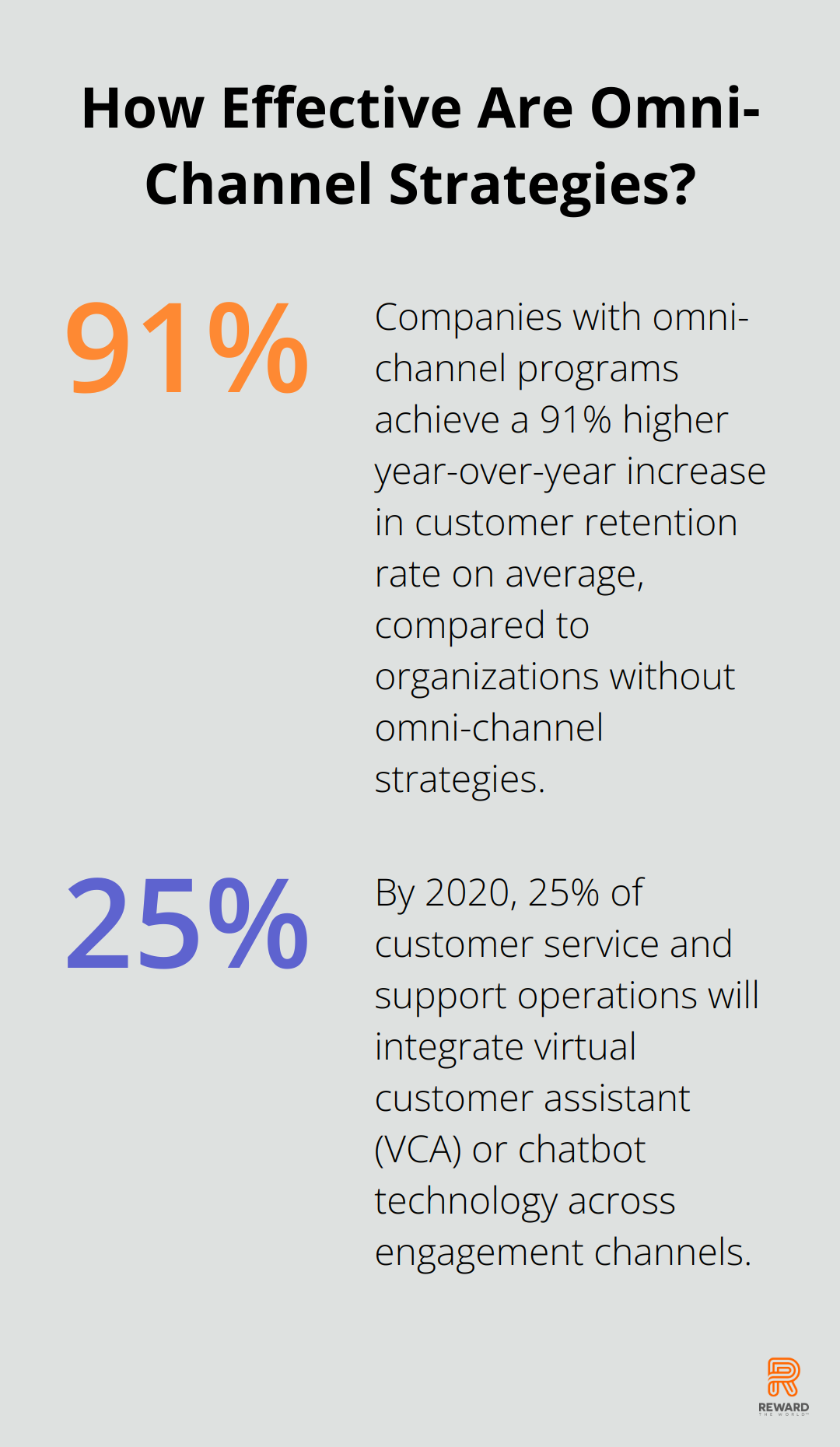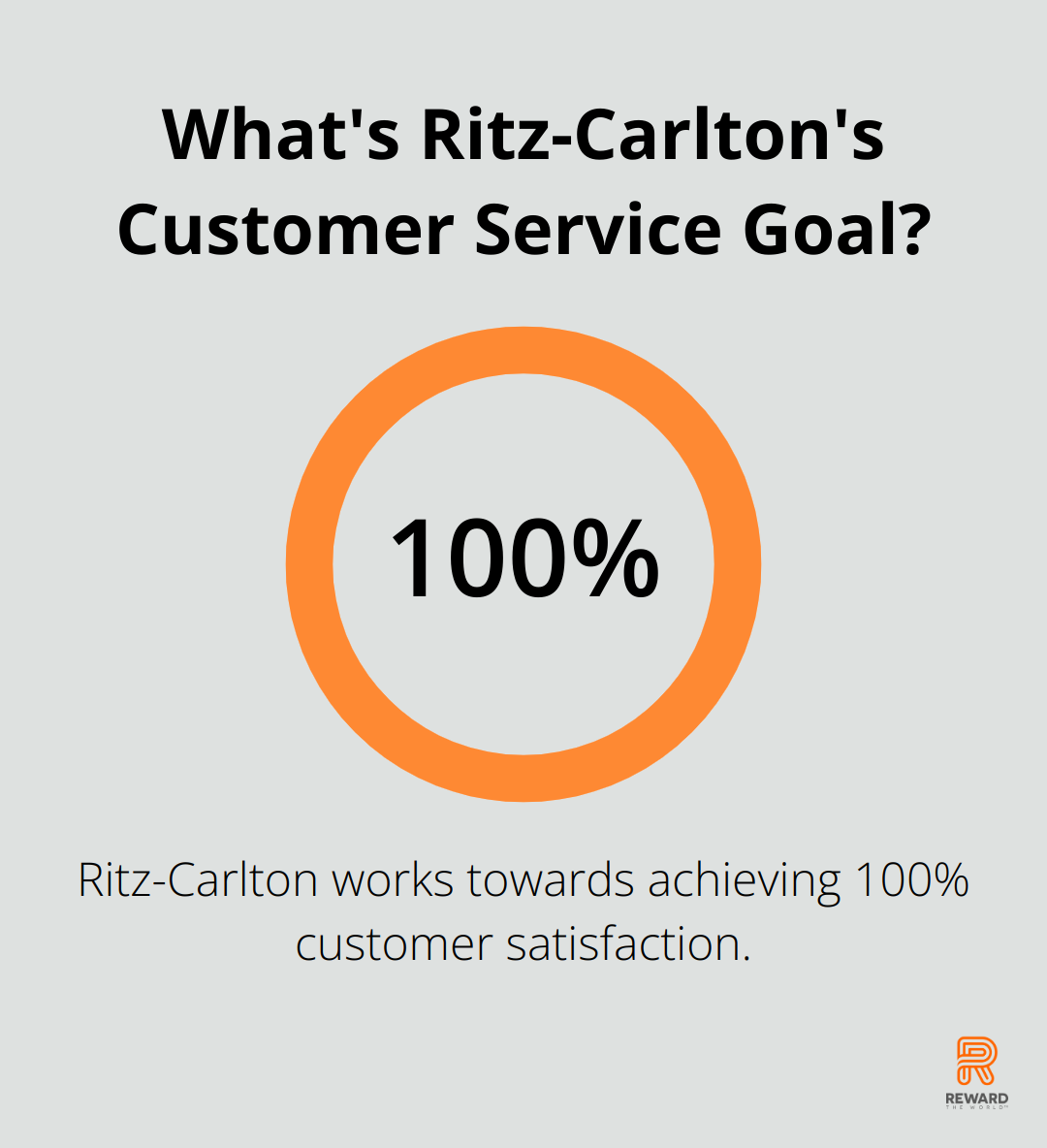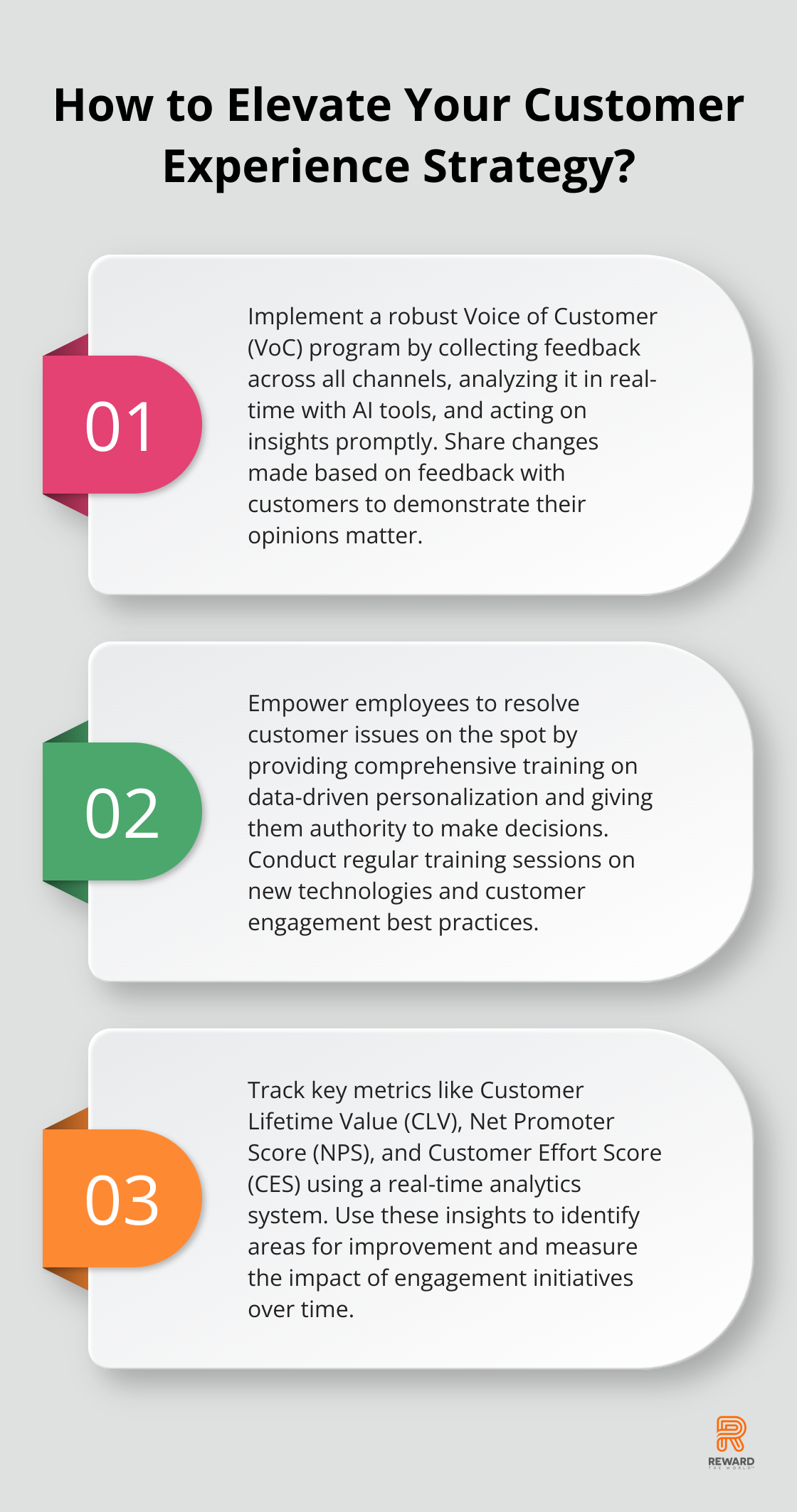
At Reward the World, we’ve seen firsthand how customer engagement can make or break a business. But what is customer engagement operations, and why does it matter?
This evolving field goes beyond traditional customer service, focusing on creating meaningful, long-lasting relationships with customers across all touchpoints. In this post, we’ll explore the key components of customer engagement operations and how they can transform your business strategy.
What Are Customer Engagement Operations?
The Evolution of Customer Interaction
Customer engagement operations form the backbone of modern business strategies. They focus on creating and maintaining meaningful relationships with customers across all touchpoints. This approach combines technology, data analytics, and human interaction to deliver personalized experiences that keep customers coming back.

Traditional customer service once limited itself to handling complaints and inquiries. Today’s customer engagement operations take a proactive stance, anticipating needs and solving problems before they arise. Netflix’s recommendation system exemplifies this approach. It doesn’t just respond to what you’ve watched; it predicts what you might enjoy next, keeping you engaged with the platform.
Data-Driven Personalization
Effective customer engagement operations use data to tailor interactions. Amazon, for example, uses purchase history and browsing behavior to create personalized product recommendations. This level of customization isn’t just a nice-to-have-it’s expected. A study by Epsilon found that 80% of consumers are more likely to make a purchase when brands offer personalized experiences.
Omnichannel Presence
Modern customer engagement operations require a seamless presence across multiple channels. Customers expect a consistent experience whether they reach out via social media, email, phone, or in person. Starbucks excels at this with its mobile app, which integrates with in-store purchases and its rewards program, creating a unified customer journey.
The Role of AI and Automation
Artificial Intelligence (AI) and automation play key roles in scaling customer engagement operations. Chatbots can handle routine inquiries 24/7, freeing up human agents for more complex issues. A report by Juniper Research predicts that chatbots will deliver significant cost savings for businesses in the coming years.
Continuous Feedback and Improvement
Unlike traditional customer service models that often operate in silos, customer engagement operations thrive on continuous feedback loops. This involves not just collecting customer feedback but actively using it to improve products, services, and processes. Companies like Apple regularly release software updates based on user feedback, demonstrating a commitment to ongoing improvement.
Measuring Success
The success of customer engagement operations is measured through various metrics, including Customer Lifetime Value (CLV), Net Promoter Score (NPS), and Customer Effort Score (CES). These metrics provide insights into long-term customer relationships rather than just individual transactions.
In the rapidly evolving business landscape, customer engagement operations have become a critical differentiator. They go beyond solving problems to creating experiences that build loyalty and drive growth. Now that we understand what customer engagement operations are, let’s explore the key elements that make these operations truly effective.
Mastering the Core Elements of Customer Engagement
Seamless Omnichannel Communication
Modern customers demand a consistent experience across all touchpoints. An effective omnichannel strategy creates a unified experience, not just a presence on multiple platforms. Customers should seamlessly transition from social media to email to phone without repeating information.

Businesses must invest in integrated Customer Relationship Management (CRM) systems to achieve this goal. These systems consolidate customer data from various sources, providing a comprehensive view of each customer. A study by Aberdeen found that companies with omni-channel programs achieve a 91% higher year-over-year increase in customer retention rate on average, compared to organizations without omni-channel strategies.
Hyper-Personalization Through Data
Data-driven personalization extends beyond addressing customers by name. It involves using customer data to tailor every interaction. This approach can include customized product recommendations, adjusted communication frequency based on engagement levels, or even real-time personalized website content.
Netflix exemplifies effective personalization. Their algorithm analyzes viewing history, search queries, and viewing times to provide highly relevant content suggestions. This level of personalization has contributed to Netflix’s impressive customer retention rate.
AI and Automation for Scale and Efficiency
Artificial Intelligence (AI) and automation are essential components of modern customer engagement operations. They handle large volumes of interactions efficiently while maintaining quality. AI-powered chatbots can manage routine inquiries 24/7, allowing human agents to focus on more complex issues.
Gartner predicts that by 2020, 25% of customer service and support operations will integrate virtual customer assistant (VCA) or chatbot technology across engagement channels. This shift improves response times and customer satisfaction, not just cost savings. (Reward the World’s AI-driven reward selection system ensures customers receive the most relevant and appealing rewards, significantly boosting engagement rates.)
Continuous Improvement Through Feedback Loops
Successful customer engagement strategies evolve based on customer feedback. This process involves collecting feedback and actively using it to improve products, services, and processes.
A robust Voice of Customer (VoC) program is essential. It can include regular surveys, social media monitoring, and analysis of customer service interactions. A study by Temkin Group found that companies earning $1 billion annually can expect an additional $700 million within 3 years of investing in customer experience.
To maximize customer feedback, businesses should:
- Collect feedback across all channels
- Analyze feedback in real-time using AI-powered tools
- Share insights across departments
- Act on feedback promptly
- Communicate changes back to customers
This approach not only improves offerings but also demonstrates to customers that their opinions matter, fostering loyalty and trust.
As we move forward, it’s clear that mastering these core elements of customer engagement sets the foundation for success. However, implementing these strategies effectively requires a well-planned approach. In the next section, we’ll explore how businesses can put these principles into action and create a customer engagement strategy that drives real results.
How to Implement Effective Customer Engagement Operations
Build a Customer-Centric Culture
Creating a customer-centric culture forms the foundation of effective engagement operations. This approach aligns every department, from marketing to product development, around customer needs and preferences. Start by clearly communicating the importance of customer-centricity to all employees. Share customer success stories in company meetings and newsletters to reinforce this focus.

Promote cross-functional collaboration to eliminate silos that hinder seamless customer experiences. For example, have your product team regularly sit in on customer service calls to gain direct insights into customer pain points.
Select the Right Technology Stack
Choosing the right technology is essential for scaling your customer engagement efforts. Look for platforms that offer robust data analytics, automation capabilities, and seamless integration with your existing systems. A comprehensive Customer Relationship Management (CRM) system should be at the core of your tech stack.
When evaluating technology options, prioritize solutions that offer:
- Real-time data synchronization across channels
- AI-powered predictive analytics for personalization
- Easy-to-use interfaces for both customers and employees
- Scalability to grow with your business
(Reward the World’s platform offers all these features plus instant reward delivery and integration with over 60 million rewards, making it a top choice for businesses looking to enhance their customer engagement operations.)
Empower Your Employees
Your employees stand at the front line of customer engagement. Invest in comprehensive training programs that extend beyond basic customer service skills. Teach employees how to use data insights to personalize interactions and make informed decisions.
Give your team the authority to resolve issues on the spot. Ritz-Carlton works towards achieving 100% customer satisfaction. While this exact approach might not suit all businesses, the principle of empowering employees to make decisions can significantly improve customer satisfaction.
Regular training sessions on new technologies and customer engagement best practices are essential.
Measure and Analyze Engagement Metrics
To improve your customer engagement operations, you need to consistently measure their effectiveness. Key metrics to track include:
- Customer Lifetime Value (CLV)
- Net Promoter Score (NPS)
- Customer Effort Score (CES)
- Engagement Rate (across various channels)
- First Contact Resolution Rate
Use these metrics to identify areas for improvement and track the impact of your engagement initiatives over time. For example, if you notice a low engagement rate on a particular channel, you might need to reassess your content strategy or the channel’s relevance to your audience.
Implement a robust analytics system that provides real-time insights. This allows you to make data-driven decisions quickly.
Final Thoughts
Customer engagement operations have become essential for modern business success. Companies that focus on creating meaningful relationships with customers across all touchpoints drive loyalty, increase revenue, and stay ahead in competitive markets. The future of customer engagement will see AI enabling hyper-personalization at scale, while voice-activated interfaces and augmented reality create innovative engagement opportunities.

Businesses aiming to enhance their engagement strategies should invest in robust technology, foster a customer-centric culture, and empower employees to deliver exceptional experiences. Continuous measurement and analysis of engagement metrics will identify areas for improvement. At Reward the World, we understand the complexities of customer engagement operations and offer a powerful global incentives platform to boost customer loyalty and increase sales conversions.
As we move forward, the importance of customer engagement operations will only grow. Companies that prioritize effective customer engagement strategies will be well-positioned to thrive in an increasingly competitive landscape. By creating value for customers at every interaction, businesses can build lasting relationships that drive sustainable growth and success.
